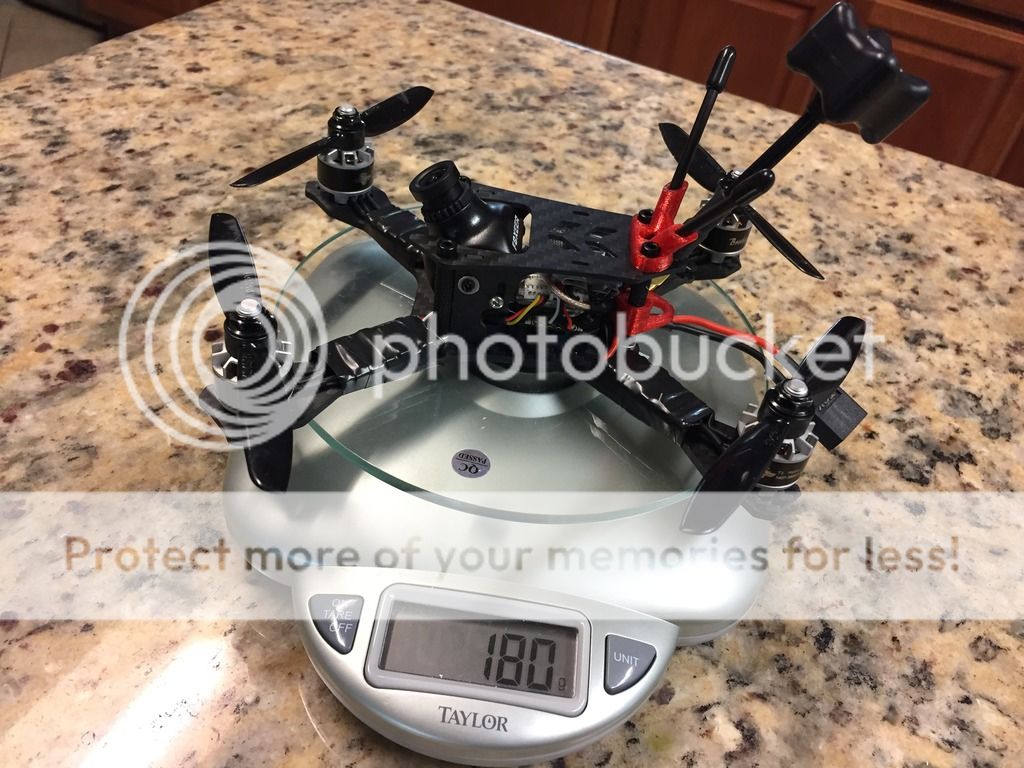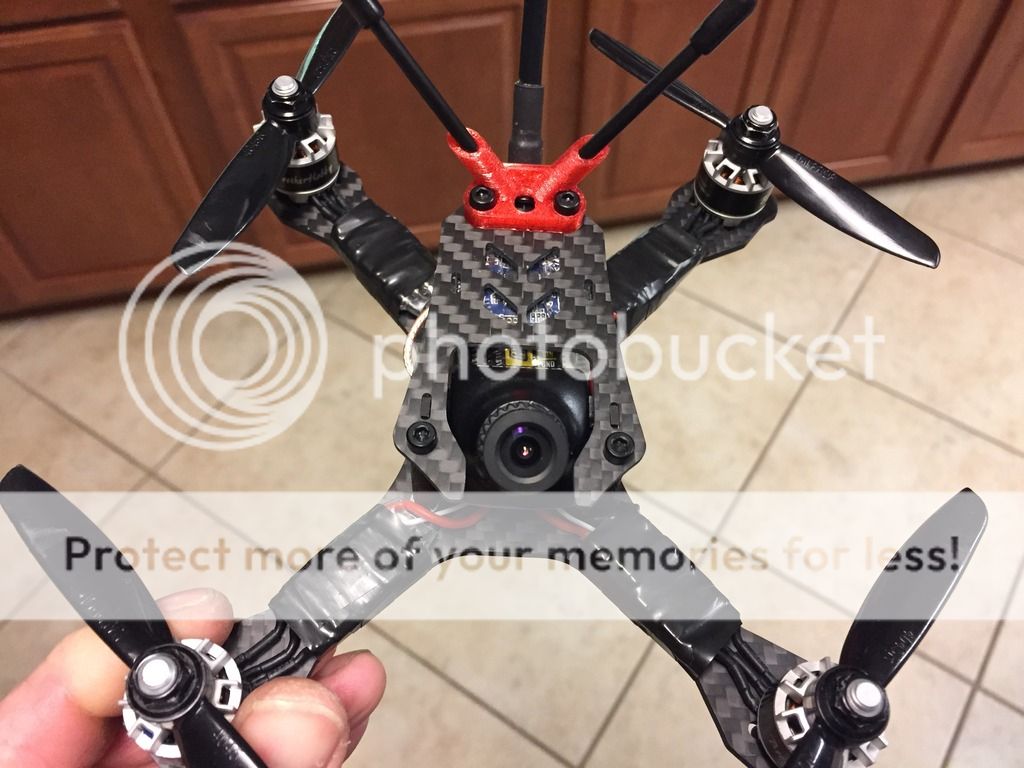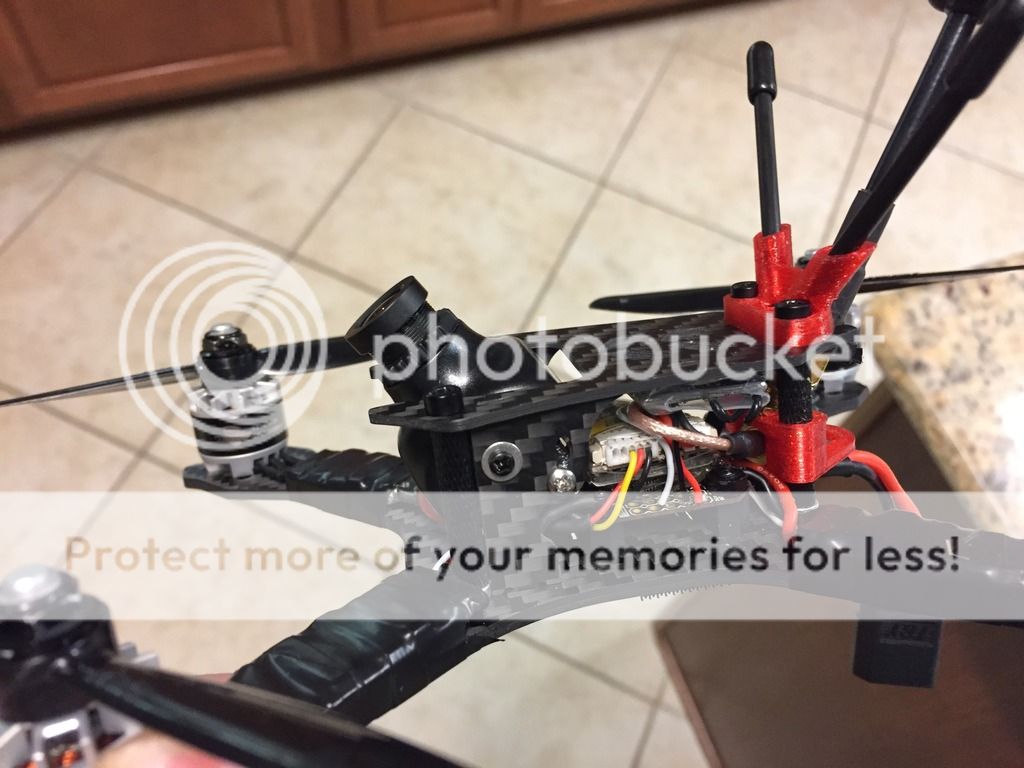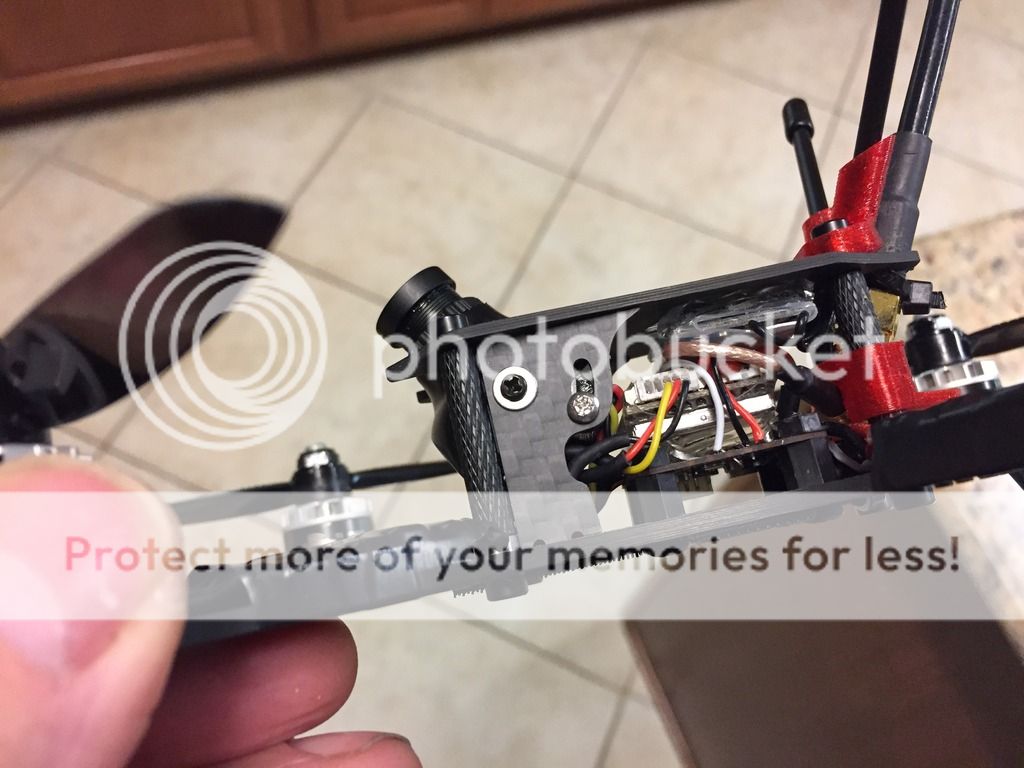catalystmachine
New member
As few as 3 years ago FPV racing was in it's infancy. The majority of people were flying racing machines around 250mm in size swinging 6" props. Then in summer 2015 everyone started to move over to 210"ish" sized machines designed to fit 5" props. Its seemed very sudden. All of the sudden... WHAM! 6 inch was out and 5 inch was "in". Now most racing quads you see on a track spin 5" props. Typically larger 6" props machines are used for Freestyle. Why did this happen? Why was there a shift to smaller size craft as the GO-TO race setup?
Answer: Advancement in power system technology
Summer of 2015 the Charpu QAV 210 led the way into the 5" craze. The designers realized as power system technology improved they could produce better performance for a race craft from a smaller package. 2205 and 2206 sized motors came out that could swing 5" props and make thrust values no one dreamed possible, back in "ancient 2014"! This ability to pack high thrust into a smaller package led the industry to progress to smaller craft. This means similar thrust/weight as a 6" machine but with less inertia. And as we all know inertia is the enemy of a racing craft. Higher inertia means it takes more power to change direction and directional changes are slower. It doesn't just stop there. There are other advantages to using smaller drone racers. Namely price and crash durability. In general price of smaller components is less than a comparable component intended for a larger craft pulling more amps. Look at 30 AMP ESC pricing compared to a 20 AMP ESC pricing, for instance. Then there is durability of parts. A larger craft has larger components that hold more mass. In a crash this means more force on parts which translates into higher stresses and more broken parts. The higher the mass the more broken parts. Its a simple equation.
At Catalyst Machineworks we believe there is an upcoming revolution on the horizon. This is a movement from 5" race craft down to 4" race craft as the "GO-TO" setup. There is a new breed of motor coming out now in the 1407 size which has the ability to produce unbelievable thrust for their weight swinging a 4" prop. Take the new Brother Hobby 1407-3600kv motor for instance. This cute little bastard only weighs 15 grams but yet can produce peak theoretical thrust (aka thrust test stand) of 750g on 4045 two blade props! Now you may say, "Yea but a 2205 can make 1400g thrust on 5 inch props". Well this is true, but a light weight 2205 motor also is around 27g - 30g, depending. So for both motors we have about the same thrust/weight ratio 50/1 but yet the 1407 motor has less INERTIA on the craft as you move it through the air. This means the craft as a whole has better maneuverability compared to a 5" machine, as long as you choose components on the rest of the craft with less weight in mind, ESC's, FC, PDB, Lipo, props, RX, etc, and most important the frame itself. All these items need to be selected to keep weight as low as possible. Designers of FPV electronics are making it easy too! With smaller and lighter gear coming out constantly. PDB/FC combos, 4in1 ESC's, smaller single ESC's, smaller lighter motors, smaller and lighter VTX. The list goes on and one.
Enter the Catalyst Machineworks SuperLight 4R. This is a project we currently have going on which is intended to lead the way into this brave new world of 4" racing craft. It is currently a prototype and we are actively flushing out the design to bring it to production. It builds on our popular SuperLight 5" machine we have been selling for a number of months now using the same design principles and elements. However, this one is designed around 4" props and the 1407"ish" sized motor as the ideal power plant to give this bird the ability to compete against and beat a comparable 5" craft. With the 4R we can produce similar thrust/weight but have MUCH LESS INERTIA than a 5" craft. All up weight (AUW) possible with this guy is around 165g before lipo. Its designed to be used with a 850mah - 1000mah 4s lipo. So AUW with 850mah of around 265g or so. The pictures below show my personal proto with an AUW of 175g before lipo. Mine is a fat ass since I don't have a proper FPV antenna on it and am using the optional arm braces. However, my team pilots are all receiving these prototypes soon for further testing and I can assure you theirs will be lighter than mine. Its sort of a competition between them lol.
So what does it feel like to fly this bird? Well, the top speed is similar to a very powerful 5" craft on 4s or 5s. However due to the massive reduction in mass it simply maneuvers better on the track than a 5". Acceleration out of a corner is faster. Deceleration into a corner is faster. Its easier to hold a line in the corner due to less momentum trying to pull you off line. When you make a mistake its much faster to correct. In three words. Its MIND BLOWING.
Videos coming soon... Here are some pics and specs of my proto.
http://www.catalystmachineworks.com/collections/fpv-racing-frames/products/superlight-4r
Frame: Catalyst Machineworks SuperLight 4R
Size: 167mm
Bare Frame Weight: 35g (fully dressed with all fasteners and 3D parts)
AUW Possible: 265g "ish"
Frame Config: XL
Props: 4 Inch
Bottom plate: 2.5mm carbon finish (with option for 3.5 for fattys)
Top plate: 1.5mm carbon matte finish
Camera: Accepts 1/4" mini cam or HS1177
Ideal motor: 1407
Ideal lipo: 850mah 4s

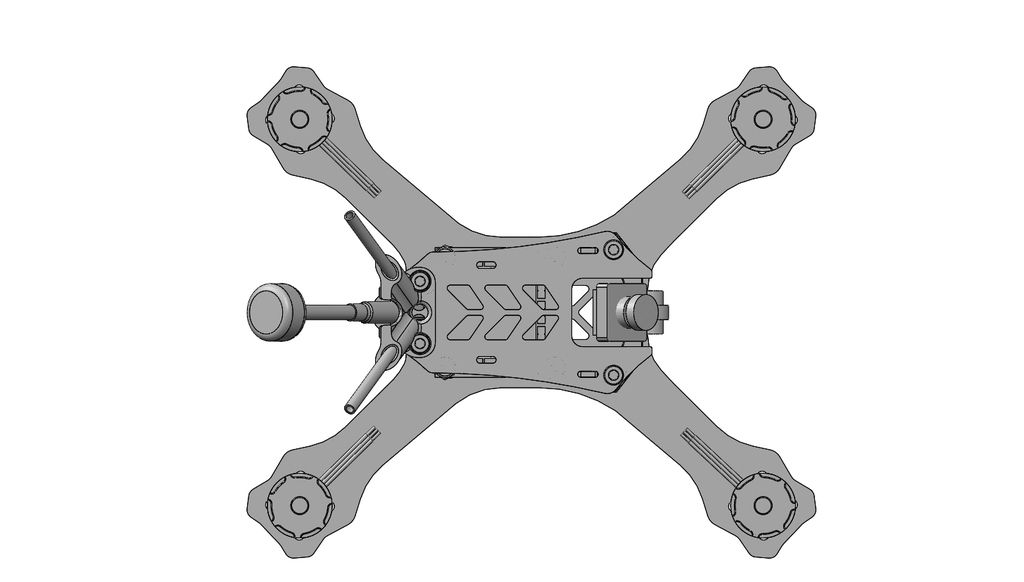
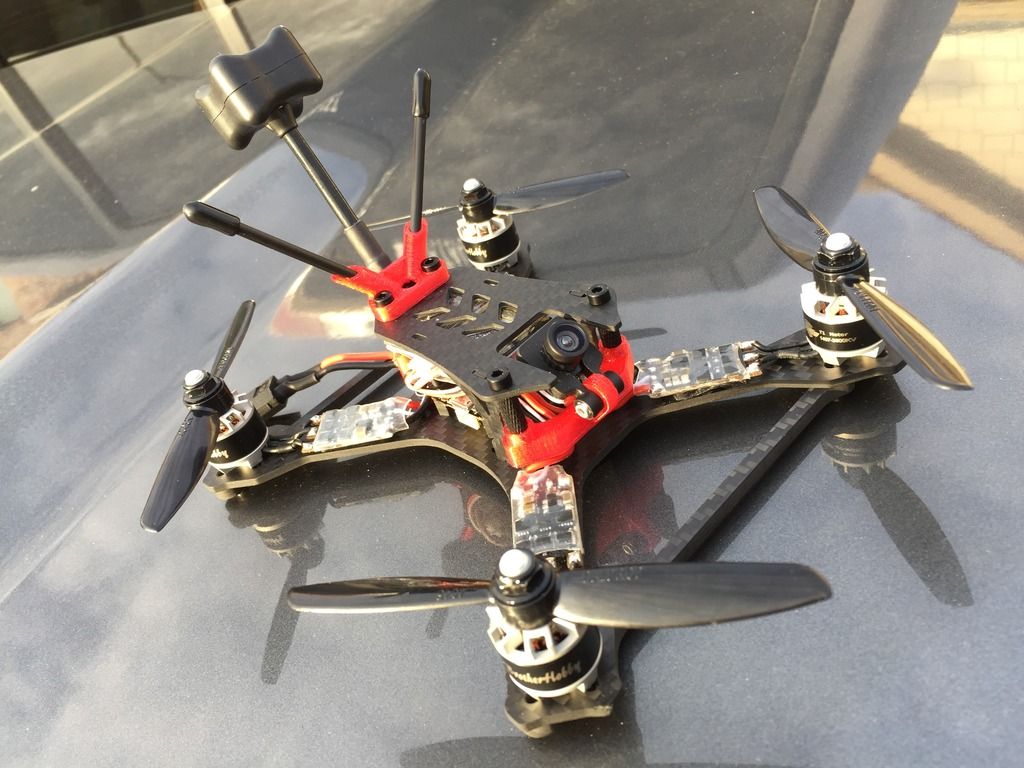

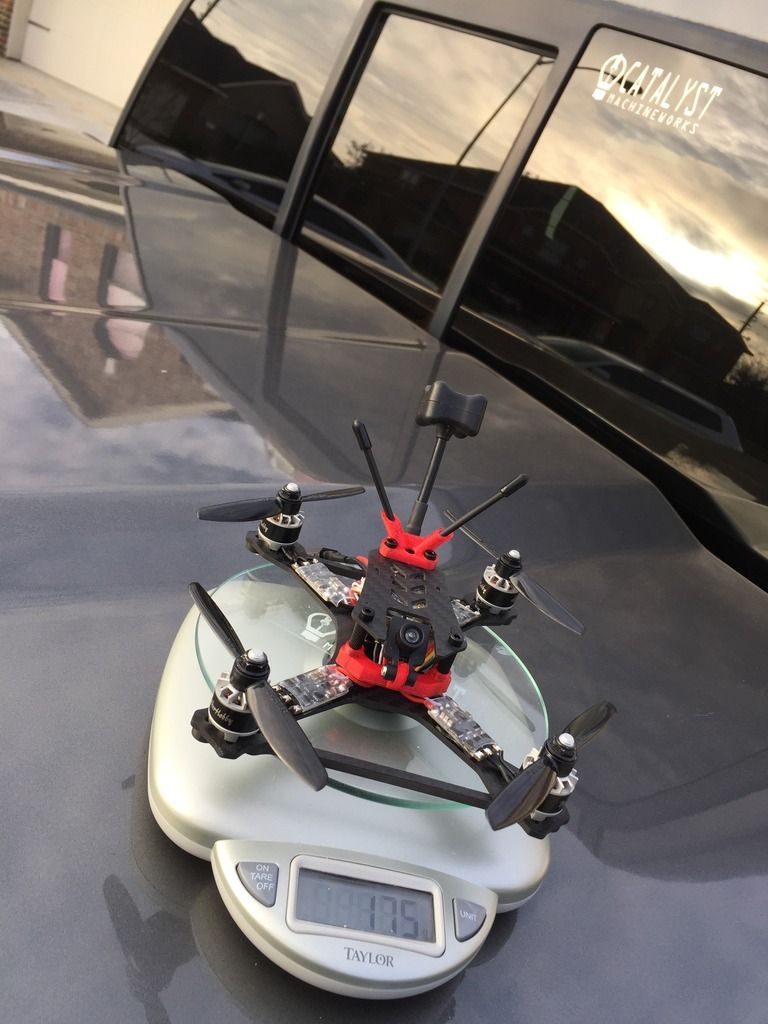
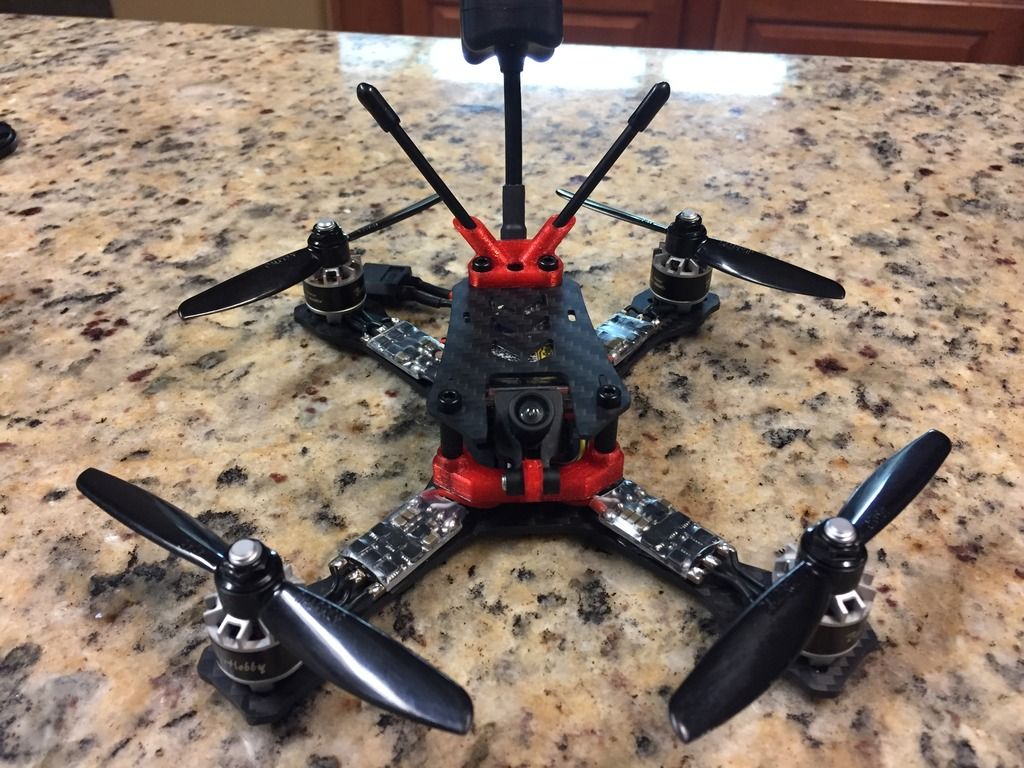
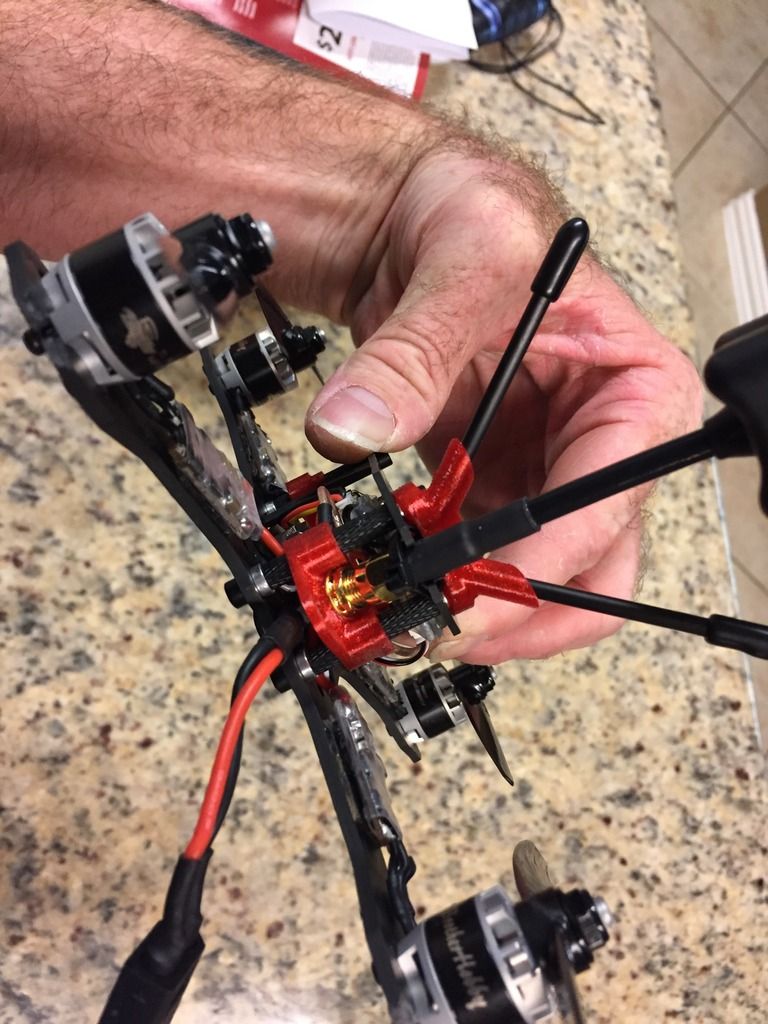
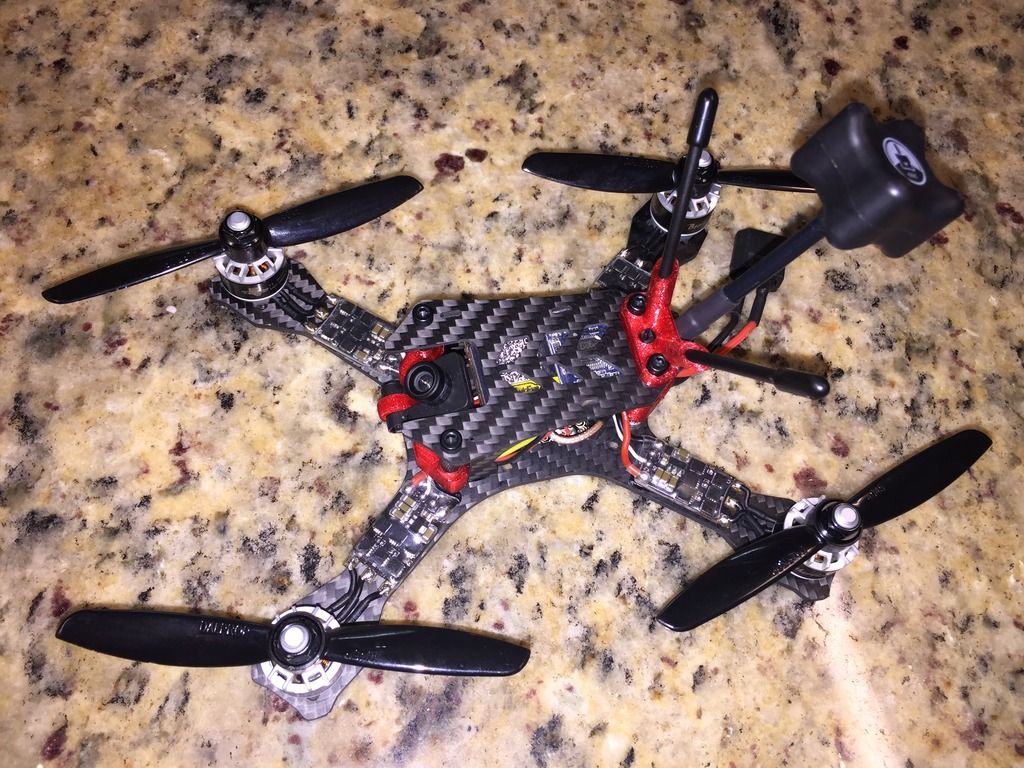
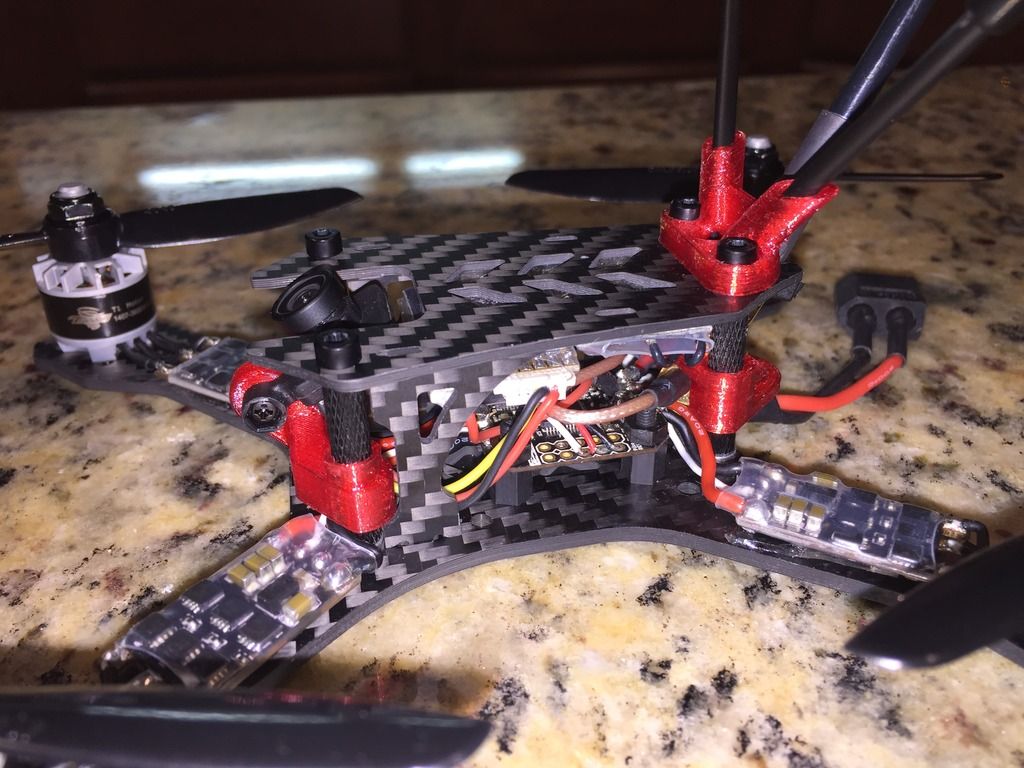
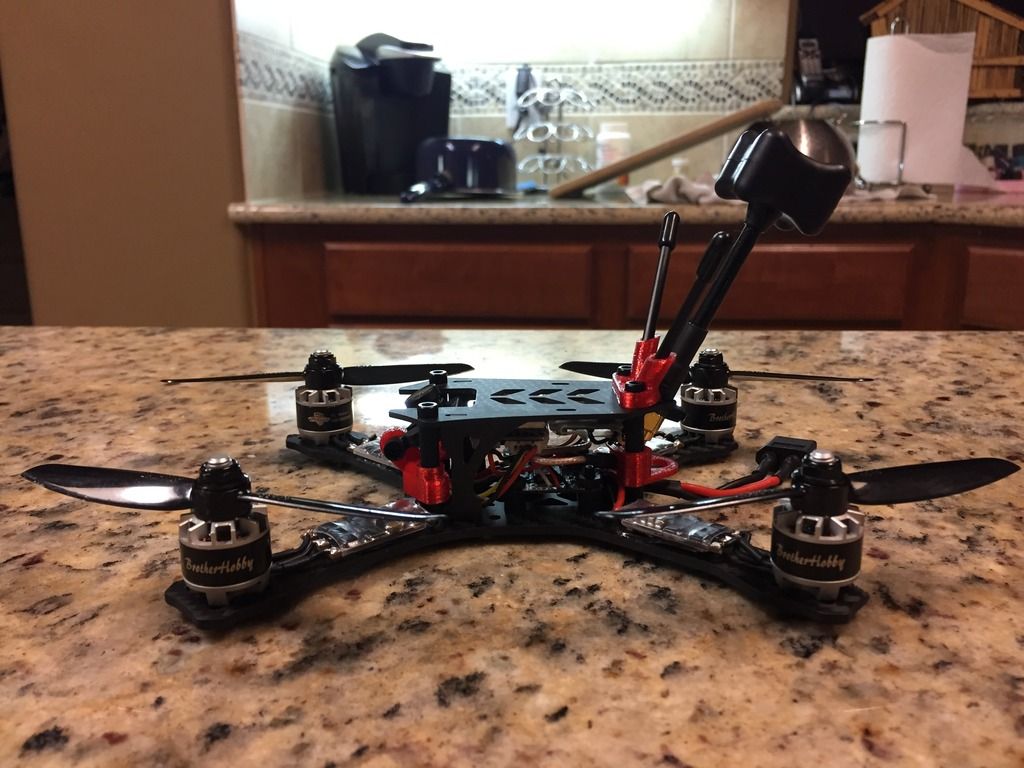

Answer: Advancement in power system technology
Summer of 2015 the Charpu QAV 210 led the way into the 5" craze. The designers realized as power system technology improved they could produce better performance for a race craft from a smaller package. 2205 and 2206 sized motors came out that could swing 5" props and make thrust values no one dreamed possible, back in "ancient 2014"! This ability to pack high thrust into a smaller package led the industry to progress to smaller craft. This means similar thrust/weight as a 6" machine but with less inertia. And as we all know inertia is the enemy of a racing craft. Higher inertia means it takes more power to change direction and directional changes are slower. It doesn't just stop there. There are other advantages to using smaller drone racers. Namely price and crash durability. In general price of smaller components is less than a comparable component intended for a larger craft pulling more amps. Look at 30 AMP ESC pricing compared to a 20 AMP ESC pricing, for instance. Then there is durability of parts. A larger craft has larger components that hold more mass. In a crash this means more force on parts which translates into higher stresses and more broken parts. The higher the mass the more broken parts. Its a simple equation.
At Catalyst Machineworks we believe there is an upcoming revolution on the horizon. This is a movement from 5" race craft down to 4" race craft as the "GO-TO" setup. There is a new breed of motor coming out now in the 1407 size which has the ability to produce unbelievable thrust for their weight swinging a 4" prop. Take the new Brother Hobby 1407-3600kv motor for instance. This cute little bastard only weighs 15 grams but yet can produce peak theoretical thrust (aka thrust test stand) of 750g on 4045 two blade props! Now you may say, "Yea but a 2205 can make 1400g thrust on 5 inch props". Well this is true, but a light weight 2205 motor also is around 27g - 30g, depending. So for both motors we have about the same thrust/weight ratio 50/1 but yet the 1407 motor has less INERTIA on the craft as you move it through the air. This means the craft as a whole has better maneuverability compared to a 5" machine, as long as you choose components on the rest of the craft with less weight in mind, ESC's, FC, PDB, Lipo, props, RX, etc, and most important the frame itself. All these items need to be selected to keep weight as low as possible. Designers of FPV electronics are making it easy too! With smaller and lighter gear coming out constantly. PDB/FC combos, 4in1 ESC's, smaller single ESC's, smaller lighter motors, smaller and lighter VTX. The list goes on and one.
Enter the Catalyst Machineworks SuperLight 4R. This is a project we currently have going on which is intended to lead the way into this brave new world of 4" racing craft. It is currently a prototype and we are actively flushing out the design to bring it to production. It builds on our popular SuperLight 5" machine we have been selling for a number of months now using the same design principles and elements. However, this one is designed around 4" props and the 1407"ish" sized motor as the ideal power plant to give this bird the ability to compete against and beat a comparable 5" craft. With the 4R we can produce similar thrust/weight but have MUCH LESS INERTIA than a 5" craft. All up weight (AUW) possible with this guy is around 165g before lipo. Its designed to be used with a 850mah - 1000mah 4s lipo. So AUW with 850mah of around 265g or so. The pictures below show my personal proto with an AUW of 175g before lipo. Mine is a fat ass since I don't have a proper FPV antenna on it and am using the optional arm braces. However, my team pilots are all receiving these prototypes soon for further testing and I can assure you theirs will be lighter than mine. Its sort of a competition between them lol.
So what does it feel like to fly this bird? Well, the top speed is similar to a very powerful 5" craft on 4s or 5s. However due to the massive reduction in mass it simply maneuvers better on the track than a 5". Acceleration out of a corner is faster. Deceleration into a corner is faster. Its easier to hold a line in the corner due to less momentum trying to pull you off line. When you make a mistake its much faster to correct. In three words. Its MIND BLOWING.
Videos coming soon... Here are some pics and specs of my proto.
http://www.catalystmachineworks.com/collections/fpv-racing-frames/products/superlight-4r
Frame: Catalyst Machineworks SuperLight 4R
Size: 167mm
Bare Frame Weight: 35g (fully dressed with all fasteners and 3D parts)
AUW Possible: 265g "ish"
Frame Config: XL
Props: 4 Inch
Bottom plate: 2.5mm carbon finish (with option for 3.5 for fattys)
Top plate: 1.5mm carbon matte finish
Camera: Accepts 1/4" mini cam or HS1177
Ideal motor: 1407
Ideal lipo: 850mah 4s












